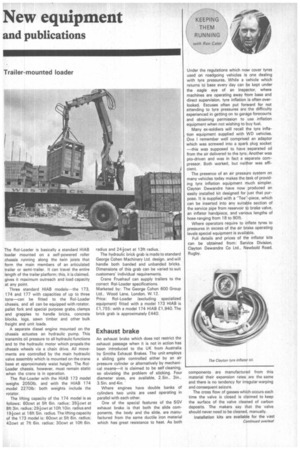/ KEEPING THEM RUNNING
Page 29

If you've noticed an error in this article please click here to report it so we can fix it.
\ with Ron Cater/ Under the regulations which now cover tyres used on roadgoing vehicles is one dealing with tyre pressures. While a vehicle which returns to base every day can be kept under the eagle eye of an inspector, where machines are operating away from base and direct supervision, tyre inflation is often overlooked. Excuses often put forward for not attending to tyre pressures are the difficulty experienced in getting on to garage forecourts and obtaining permission to use inflation equipment when not wishing to buy fuel.
Many ex-soldiers will recall the tyre inflation equipment supplied with WD vehicles. One I remember well comprised an adaptor which was screwed into a spark plug socket —this was supposed to have separated oil from the air delivered to the tyre. Another was pto-driven and was in fact a separate compressor. Both worked, but neither was efficient.
The presence of an air pressure system on many vehicles today makes the task of providing tyre inflation equipment much simpler. Clayton Dewandre have now produced an easily installed kit designed for just that purpose. It is supplied with a "Tee"-piece, which can be inserted into any suitable section of the service pipe from reservoir to brake valve, an inflator handpiece, and various lengths of hose ranging from 18 to 90 ft.
Where operators require to inflate tyres to pressures in excess of the air brake operating levels special equipment is available.
Full details and prices of the inflator kits can be obtained from: Service Division, Clayton Dewandre Co Ltd., Newbold Road, Rugby.




















































































